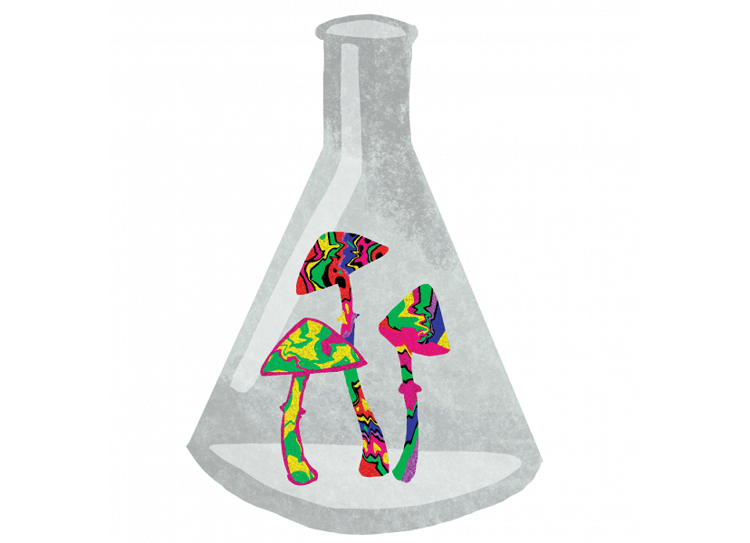One of the biggest contemporary scientific renaissances is happening right now on the other side of Forest Park. And no, it’s not the cure for cancer. In fact, the research subject is illegal in the state of Missouri.
The Healthy Mind Lab at Washington University School of Medicine is conducting some of the most cutting-edge research into psilocybin, the active ingredient in “magic mushrooms.”
Psychedelics are a class of drugs that alter consciousness. Psilocybin, LSD, and mescaline often conjure images of tie-dye shirts and hallucinatory mirages. However, the emerging field of psychedelic-assisted therapy is producing promising results for some of the most common mental illnesses such as depression, post-traumatic stress disorder (PTSD), and obsessive compulsive disorder (OCD).
Dr. Ginger Nicol, associate professor of psychiatry, leads the psychedelics research team within the Healthy Mind Lab with Dr. Joshua Seigel. Their research comes after a long history of stigma and restriction of psychedelic substances.
Nicol said that medical research into psychedelics first came into prominence in the 1940s and 50s. While indigenous use can be dated back to the earliest annals of history, the modern medical approach to psychedelics started in 1938 when LSD was accidentally synthesized by Swiss chemist Albert Hofmann. Psychedelics remained on the fringes of the academic community, and Nicol added that researchers would sometimes consume substances themselves to document their effects.
Nicol said that researchers, such as former Harvard professors Timothy Leary and Ram Dass (then Richard Alpert), started to realize it was pretty safe.
“Much safer than alcohol or tobacco. And so the likelihood that you will overdose and that you’ll have a bad outcome because of the dose is very low,” she said. “And so that, I think, made it easy for it to become part of the subculture.”
However, right as scientific research began to take off and psychedelics entered the subculture of the 1960s and 70s, psilocybin, LSD, and other psychedelics were classified as Schedule I drugs. In other words, the federal government deemed there was no medical use and that psychedelics had a high potential for abuse.
“Psychedelics were very scary and threatening to the status quo and trying to maintain order,” Nicol said. “And then you have underneath all of that, the military and CIA starting to do experiments with it to see what could happen, if you could control people.”
